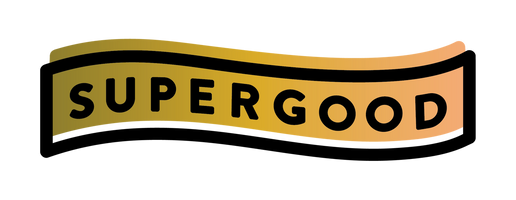CBD Q+A
We enlisted in the help of Gretchen Lidicker - wellness expert, health editor (at mindbodygreen), and author of CBD Oil: Everyday Secrets - to answer all your burning questions about everyone's favorite non-intoxicating cannabinoid: CBD.
Looking for an answer to a question that isn't here? Shoot us an email through our contact form and we'll do our best to get it answered.
WHAT IS CBD?
CBD (short for cannabidiol) is one of the main compounds found in the cannabis plant, which includes both marijuana and hemp. Unlike THC, CBD will not cause intoxication or get you high, but it does have a long list of exciting health benefits we can take advantage of.
WHAT IS IT TYPICALLY USED FOR?
Anxiety, pain, chronic inflammation (and conditions related to it like IBS and arthritis), headaches, gut issues, and as an antioxidant ingredient in skin care are just a few of the many reasons why people are taking CBD. CBD is also famous for its ability to help patients with seizure disorders that aren’t helped by available medications. In fact, the FDA just approved a CBD-based pharmaceutical drug for this very use.
WHAT ARE CANNABINOIDS?
CBD and THC are part of a bigger group of chemically similar compounds called cannabinoids. THC and CBD are definitely the most famous ones, but researchers suspect that there are actually more than eighty different cannabinoids and as many as four hundred different chemical compounds inside the cannabis plant! Cannabinoids are found in a few different places; they’re present naturally in the body (in this case, they’re called endocannabinoids), found in plants (these are called phytocannabinoids), and they can even be created in a lab (aka synthetic cannabinoids). Interestingly, studying phytocannabinoids in plants actually led to the discovery of endocannabinoids and an entire system in the human body called the endocannabinoid system (more on this further down the page, promise!).
HOW DO THEY WORK?
Cannabinoids interact with the body in a lot of different ways but one of the most important is by way of two cannabinoid receptors, CB1 and CB2. THC directly binds with CB1 receptors, which are found mainly in the brain and the nervous system and are responsible for the intoxication many of us have experienced from marijuana. CBD, however, doesn’t directly bind with CB1 or CB2 receptors. Instead, research has shown that CBD can influence the body’s inflammatory response and immune system in other ways and interact with serotonin receptors and GABA receptors in the brain—just to name a few.
COULD YOU ELABORATE ON THE ENDOCANNABINOID SYSTEM?
The endocannabinoid system is sometimes referred to as a “master regulatory system” of the body and keeping it healthy appears to be really important to our overall health and well-being. Researchers have even coined the term “clinical endocannabinoid deficiency,” which has been associated with chronic headaches and other common health woes. Researchers think that the health of your endocannabinoid system is intricately related to your diet and lifestyle and that taking phytocannabinoids and doing things to support your body’s natural endocannabinoid production might help bring it back into balance.
I DIDN'T FEEL ANYTHING.
Some people will feel obvious, immediate changes when they take CBD and others will only notice subtle ones or none at all. This is because the way your body responds to cannabinoids depends largely on the status of your unique endocannabinoid system. If you don’t feel anything when you take CBD, that doesn’t mean you’re not benefiting from it in some way. CBD’s anti-inflammatory and antioxidant properties are reason enough to make it part of your lifestyle. Experts also think that it can take up to a few months of taking CBD regularly for it to reach its full potential, which is important to know if you’re feeling discouraged at first. My advice is to stick it out for a while and keep a journal of your symptoms so you can take note of any subtle changes that might occur.
WHAT WILL HAPPEN IF I TAKE TOO MUCH?
As of now, there are no “official” dosage recommendations for CBD and that’s partly because each person’s endocannabinoid system is unique and researchers haven’t figured exactly what the best way to dose CBD actually is. If you don’t feel anything the first few times you take CBD, you might be tempted to up the dose. But is it safe—and can you overdose? Based on the information we have so far, taking higher doses of CBD can lead to symptoms like headaches and fatigue—but so far nothing more serious than that. In other words: It’s extremely safe. That said, it’s always a good idea to talk to your doctor before taking more than the recommended dose, especially if you have a chronic health issue of any kind because CBD can interact with some medications at higher doses.

